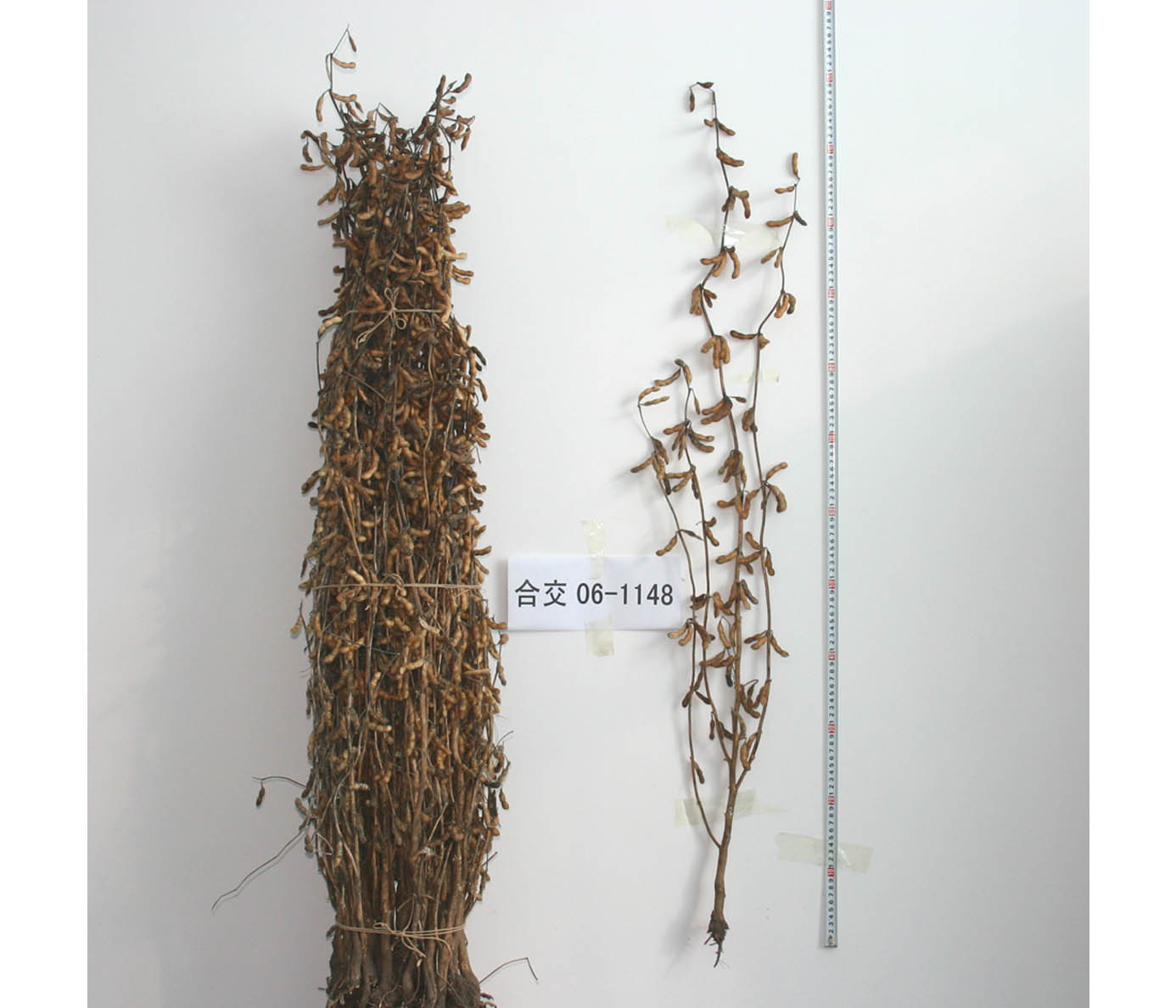大豆叶面施氮量及氮素利用率的15N标记
- 郭泰 ,
- 王志新 ,
- 张振宇 ,
- 郭美玲 ,
- 李灿东 ,
- 郑伟 ,
- 刘忠堂
- 黑龙江省农业科学院佳木斯分院, 佳木斯 154007
? 共同第一作者
收稿日期: 2014-07-16
录用日期: 2014-12-26
网络出版日期: 2015-05-07
基金资助
黑龙江省农业科技创新工程(No.2013QN007)
Research into Nitrogen Application and Utilization Rate in Soybean Leaves With 15N Tracing Technique
- Tai Guo ,
- Zhixin Wang ,
- Zhenyu Zhang ,
- Meiling Guo ,
- Candong Li ,
- Wei Zheng ,
- Zhongtang Liu
- Jiamusi Branch Academy of Heilongjiang Academy of Agricultural Sciences, Jiamusi 154007, China
? These authors contributed equally to this paper
Received date: 2014-07-16
Accepted date: 2014-12-26
Online published: 2015-05-07
摘要
为研究大豆(Glycine max)叶面适宜施氮量及叶面氮素吸收与利用的规律, 以黑龙江省三江平原大豆主栽品种合农64为实验材料, 采用15N标记示踪法在大豆需氮关键时期R5期进行叶面施氮, 分析大豆组织器官标记氮素的积累量及回收率。结果表明: 在4.5 kg·hm-2 (N3)施氮条件下, 大豆组织器官干物质量及氮素积累量显著高于其它处理, 其中籽粒干物质平均重22.7 g, 总干物质平均重73.2 g, 分别比不施氮处理(N0)高17.92%和16.38%; 籽粒氮素积累量平均为134.4 mg∙plant-1, 比不施氮处理(N0)高13.13%, 说明4.5 kg·hm-2 (N3)施氮条件是合农64在R5期的最适叶面施氮量。在不同施氮条件下, 各组织器官标记氮积累量随着施氮量的增加呈先增加后降低的趋势, 籽粒标记氮积累量在4.5 kg·hm-2 (N3)施氮条件下最高, 为9.96 mg∙plant-1。这一结果同样说明了4.5 kg·hm-2 (N3)是合农64在R5期的最适叶面施氮量, 同时明确了叶面氮素是籽粒氮素积累增加的主要原因。在同一施氮水平下, 各组织器官标记15N积累量顺序为籽粒>茎>叶>荚皮>叶柄>根, 且各器官间差异显著, 说明在R5期叶面施氮籽粒积累的叶面氮素最多。从15N标记在各组织器官的贡献率来看, 在3.5 kg·hm-2 (N1)施氮条件下, 籽粒氮素贡献率与植株氮素回收率最高, 说明在叶面施氮量较小的条件下, 氮素更容易被籽粒吸收利用, 但净积累量却低于最适施氮量处理(N3)。在3.5 kg·hm-2 (N1)施氮条件下, 植株氮素回收率高于最适施氮量处理(N3)。

本文引用格式
郭泰 , 王志新 , 张振宇 , 郭美玲 , 李灿东 , 郑伟 , 刘忠堂 . 大豆叶面施氮量及氮素利用率的15N标记[J]. 植物学报, 2015 , 50(4) : 490 -494 . DOI: 10.11983/CBB14129
Abstract
To study nitrogen application and utilization rates in soybean leaves, we used the major soybean cultivar in the Sanjiang Plain of Heilongjiang province HeNong64 to analyze nitrogen accumulation and recovery rate in soybean leaves of the R5 stage with the 15N tracing technique. Dry weight and nitrogen accumulation of soybean organs were significantly higher with 4.5 kg∙hm-2 than other treatments. The dry weight of seeds was 22.7 g and the total plant dry weight was 73.2 g, which were significantly higher than without nitrogen application, by 17.92% and 16.38%, respectively. The nitrogen accumulation in seeds was 134.4 mg per plant and higher than without nitrogen application by 13.13%, so 4.5 kg∙hm-2 was the most suitable leaf nitrogen application amount for HeNong64 in the R5 stage. Under the tested nitrogen levels, 15N accumulation in different organs first increased then decreased with increasing nitrogen levels, and the 15N accumulation in seeds was the highest (9.96 mg per plant) with 4.5 kg∙hm-2 treatment. Therefore, 4.5 kg∙hm-2 was the most suitable leaf nitrogen application amount for HeNong64 and leaf nitrogen was the main source of nitrogen for seeds. Under the same nitrogen application level, 15N accumulation in different organs was in the order of seed>stem>leaf>pod> petiole>root and the nitrogen accumulation was significantly higher in seeds than in other organs in the R5 stage. The 15N contribution rate and plant nitrogen recovery rate in seeds with 3.5 kg∙hm-2 was highest, so nitrogen was easier to be absorbed with lower leaf nitrogen application, but its net accumulation was lower than 4.5 kg∙hm-2 and the plant nitrogen recovery rate was higher than 4.5 kg∙hm-2.

参考文献
| 1 | 曹娟华, 楮国忠 (2011). 不同施肥方式对大豆产量的影响. 现代化农业 (8), 11-12. |
| 2 | 邸伟, 金喜军, 马春梅, 龚振平, 董守坤, 张磊 (2010). 施氮水平对大豆氮素积累与产量影响的研究. 核农学报 24, 612-617. |
| 3 | 丁洪, 郭庆元 (1995). 氮肥对不同品种大豆氮积累和产量品质的影响. 土壤通报 26, 18-21. |
| 4 | 董守坤, 龚振平, 祖伟 (2010). 氮素营养水平对大豆氮素积累及产量的影响. 植物营养与肥料学报 16, 65-70. |
| 5 | 董守坤, 刘丽君, 张冰, 马春梅, 龚振平, 祖伟 (2011). 利用15N标记确定氮素营养水平对大豆籽粒氮素构成的影响. 大豆科学 30, 92-95. |
| 6 | 董钻 (2000). 大豆产量生理. 北京: 中国农业出版社. pp. 76-89. |
| 7 | 金喜军, 龚振平, 马春梅, 姚玉波, 邸伟 (2012). 大豆植株苗期至结荚初期对肥料氮的吸收与分配. 核农学报 26, 809-841, 837. |
| 8 | 刘志全, 马淑时 (1997). 大豆喷施叶面肥后产量及其性状的比较. 吉林农业科学 (2), 43-45. |
| 9 | 谢甫绨 (2011). 大豆生理与遗传改良. 北京: 中国农业出版社. pp. 50-71. |
| 10 | 晏娟, 尹斌, 张绍林, 沈其荣, 朱兆良 (2008). 不同施氮量对水稻氮素吸收与分配的影响. 植物营养与肥料学报 14, 835-839. |
| 11 | 杨延兵, 高荣岐, 尹燕枰, 吴承来, 李圣福 (2008). 不同品质小麦氮素分配及利用率的15N示踪研究. 麦类作物学报 28, 830-835. |
| 12 | 姚文秋, 于海杰, 胡国华 (2004). 叶面喷施氮磷钾混合肥对大豆品质及产量的影响. 种子世界 (9), 23-24. |
| 13 | 张勇, 杨兴勇, 董全中, 薛红, 张明明, 宋继玲 (2009). 叶面喷施氮肥对大豆丰收24号产量及品质的影响. 农业科技通讯 (10), 54-56. |
| 14 | 赵开兵, 李传军 (2001). 叶面肥及生长调节剂对大豆的增产效果. 安徽农学通报 7(4), 58. |